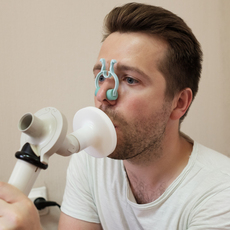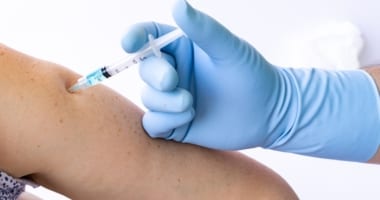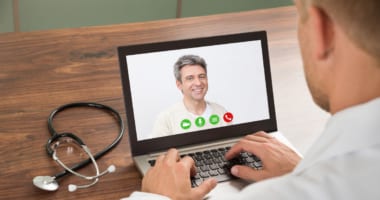 During COVID-19, one question the College has received more than any other is “What are allergists doing with regard to spirometry?” Our recent COVID member survey helps answer that question.
During COVID-19, one question the College has received more than any other is “What are allergists doing with regard to spirometry?” Our recent COVID member survey helps answer that question.
Survey demographics
The College did a follow-up COVID-19 survey of all U.S. College members from 7/30/20 – 8/16/20. A total of 291 members completed the survey, for a completion rate of 8.5%. Following are a few more survey demographics:
- 70% of all survey respondents came from single specialty private practice, 11% were from multi-specialty private practice, 8% were academic and 7% were from integrated health systems.
- 80% of all survey respondents had five or fewer providers in their practice, 11% had six to 10 providers, 5% had 11-20 providers and 4% had more than 20 providers.
- Survey responses were evenly divided across all five regions of the United States.
Spirometry Results
54% of survey respondents indicated they are conducting spirometry in their office; 46% are not.
| Are you conducting spirometry in your office? (244 responses) |
# Responses | % |
|---|---|---|
| Yes | 131 | 54% |
| No | 113 | 46% |
| Source: ACAAI COVID Member Survey 7/30/20 – 8/16/20. Copyright 2020. Data is protected by ACAAI copyright and is prohibited to be shared or published without ACAAI’s consent. | ||
For those who are conducting spirometry, we asked what precautions they were taking specific to spirometry, with multiple responses allowed. We received a wide range of responses. The most popular precaution, at 91%, was symptom/exposure screening questions prior to spirometry testing. 61% were using face shields, followed by 55% using N-95 masks and 50% using surgical masks. 26% implemented new barriers to separate staff from patients during the test. 12% were using a negative pressure fan or room.
| What precautions specific to spirometry are you taking? (Check all that apply) (127 responses) |
# Responses | % |
|---|---|---|
| Symptom/exposure screening questions prior to completing tests | 115 | 91% |
| Face shield | 78 | 61% |
| N-95 Mask | 70 | 55% |
| Surgical mask | 63 | 50% |
| New barriers in the office (dividing patient from staff while performing test) | 33 | 26% |
| Negative pressure fan / negative pressure room | 15 | 12% |
| Other (please specify) | 48 | 38% |
| Source: ACAAI COVID Member Survey 7/30/20 – 8/16/20. Copyright 2020. Data is protected by ACAAI copyright and is prohibited to be shared or published without ACAAI’s consent. | ||
Interestingly, a full 38% of those doing spirometry were taking other precautions, and there was a wide variety of responses in the Other category:
- 14 respondents said they require additional PPE for staff, ranging from gown to gloves to level 3 surgical mask.
- 8 respondents said they use some type of filter (either a HEPA air filter or a filter on the spirometry device itself).
- 8 respondents require a negative COVID PCR test prior to spirometry. Timeframe for negative COVID tests range from 48 – 96 hours before spirometry test.
- 6 respondents said they do all spirometry tests outside.
- Several respondents said they do spirometry for urgent cases only. Of those, one said they will do one or two tests at the end of the day if needed. Another said they close the room for 24 hours after doing a spirometry test.
- 3 respondents are using UV light with spirometry tests.
To learn more about what other allergists are doing with regard to spirometry, we recommend viewing the popular DocMatter thread Pulmonary function testing in the COVID-19 era.
The College has not taken a position on use of spirometry during the COVID-19 crisis. It is up to the allergist to take into account all factors for each individual case, including the community spread of COVID-19 in their area and the absolute need for spirometry to possibly make a diagnosis or change medical management. For allergists looking for guidance, the American Thoracic Society’s Advice Regarding COVID-19 For Pulmonary Function Laboratories and the European Respiratory Society Statement on Lung Function Testing during COVID-19 Pandemic and Beyond may be helpful references.


